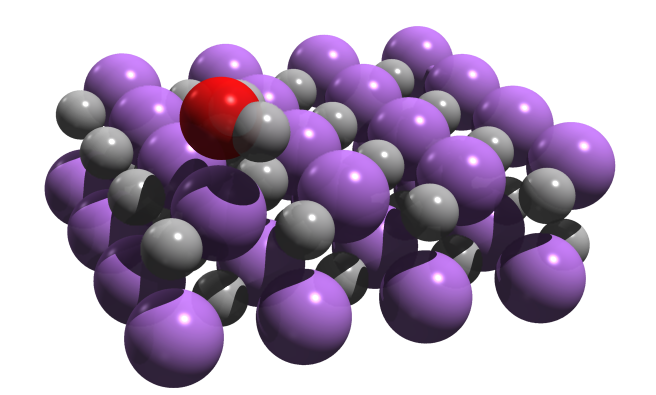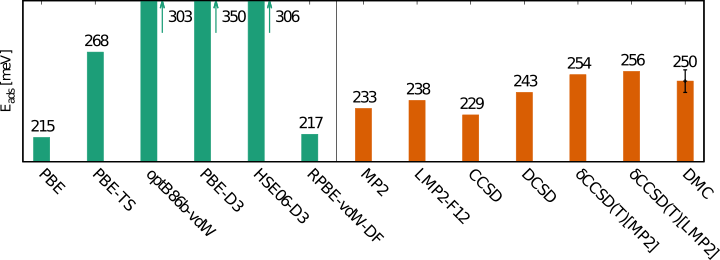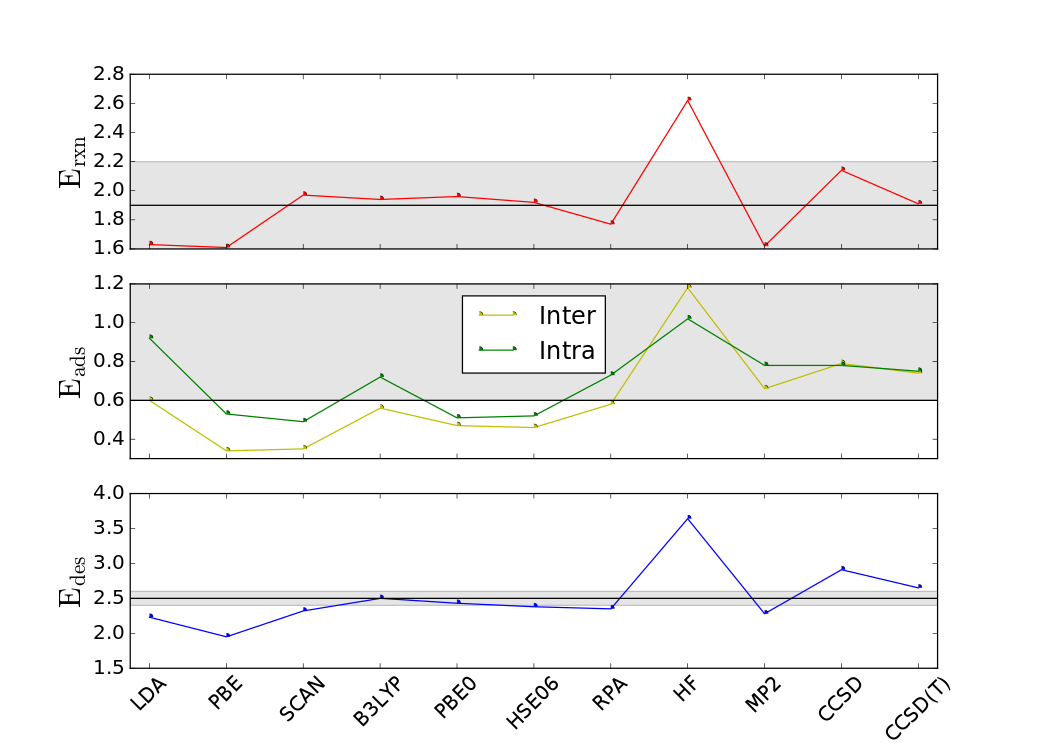Molecular adsorption on surfaces
Molecular adsorption on surfaces is a fundamentally important process in catalysis, gas storage, water purification, and many other areas. A key challenge in understanding the underlying mechanisms in molecular adsorption and desorption processes is having accurate electronic structure theories that we can solve for realistic extended surface models.
In our group we aim to develop and apply periodic quantum chemical wavefunction-based methods in surface problems, such as water adsorption and hydrogen dissociation on periodic surfaces. We rely on a canonical periodic coupled-cluster theory implementation interfaced to the Vienna ab-initio simulation package (VASP). The representation of virtual orbitals based on Gaussian basis-sets expanded in plane-waves[1], a low-rank factorization of the Coulomb integrals[2] and a finite-size correction scheme[3] allows for reducing the computational cost of the employed coupled-cluster methods.
[1] G.H. Booth, T. Tsatsoulis, G.K. Chan, A. Grüneis, J. Chem. Phys. 145, 084111 (2016).
[2] F. Hummel, T. Tsatsoulis, A. Grüneis, J. Chem. Phys. 146, 124105 (2017).
[3] T. Gruber, K. Liao, T. Tsatsoulis, F. Hummel, A. Grüneis, Phys. Rev. X, 8, 021043 (2018).
$~$


Tsatsoulis, Theodoros, et al. “A comparison between quantum chemistry and quantum Monte Carlo techniques for the adsorption of water on the (001) LiH surface.” The Journal of chemical physics 146.20 (2017):204108.


Al-Hamdani, Yasmine S., et al. “Properties of the water to boron nitride interaction: From zero to two dimensions with benchmark accuracy.” The Journal of chemical physics 147.4 (2017): 044710.


Brandenburg, Jan Gerit, et al. “Physisorption of water on graphene: Subchemical accuracy from many-body electronic structure methods.” The journal of physical chemistry letters 10.3 (2019): 358-368.

Tsatsoulis, Theodoros, et al. “Reaction energetics of hydrogen on Si (100) surface: A periodic many-electron theory study.” The Journal of chemical physics 149.24 (2018): 244105.
